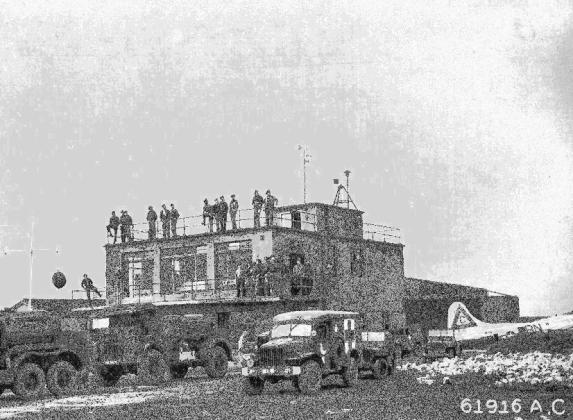Noel Shoup, an American Hero flew out of Royal Air Force Molesworth, an air base located in England during his tenure in the European War. He had been in training since March 1942 to earn his wings and learned to fly the B-17 bombers. He was still in training in the United States when the first bomber flights went out of RAF Molesworth on July 4, 1942.
The air field was built between 1940 and 1941. It was one of the early Eighth Air Force stations allocated to the United States Army Air Force. The runways were extended in 1942 to American specifications of 2000 yards to accommodate heavy four engine bombers. ( Wikipedia, RAF Molesworth) Noel Shoup arrived in November 1943 as a member of the 303rd Bombardment Group. Noel was also a member of the 359th Bombardment Squadron. The type of targets that the bombers would strike included the ball bearing plants at Schweinfort, shipyards at Bremen and an aircraft engine factory at Hamburg.
The 303rd received a Distinguished Unit Citation from President Roosevelt for a mission on January 11, 1944 when bombers were able to strike an aircraft plant at Oschersleben despite continuous attacks by enemy fighters. Enemy aircraft were destroyed in the air and on the ground. The citation stated, “The extraordinary heroism and tenacious fighting spirit was demonstrated by the 1st Bombardment Division in accomplishing its assigned task under exceptionally difficult conditions.” The division lost 42 heavy bombers with four hundred and thirty officers and enlisted men as they failed to return from the mission. (Military Combat Missions Summary 098) Noel Shoup was also on that mission. His plane was a B-17F called “Knockout Dropper”. The 42 lost planes included bombers from other air fields located in England. Molesworth lost 11 planes on that mission. Noel luckily was able to return.
The citation stated that there were 400 encounters with enemy aircraft. Two hundred and ten enemy aircraft were downed, the largest number ever claimed by any division of the Eighth Air Force for any one mission. (Military Combat Missions Summary 098) Though pilots and crew are often celebrated today, at that time the conditions the crews were living in was less than ideal. They slept in Quonset huts that were not well heated.
Visit us at dublinhistorical.org


